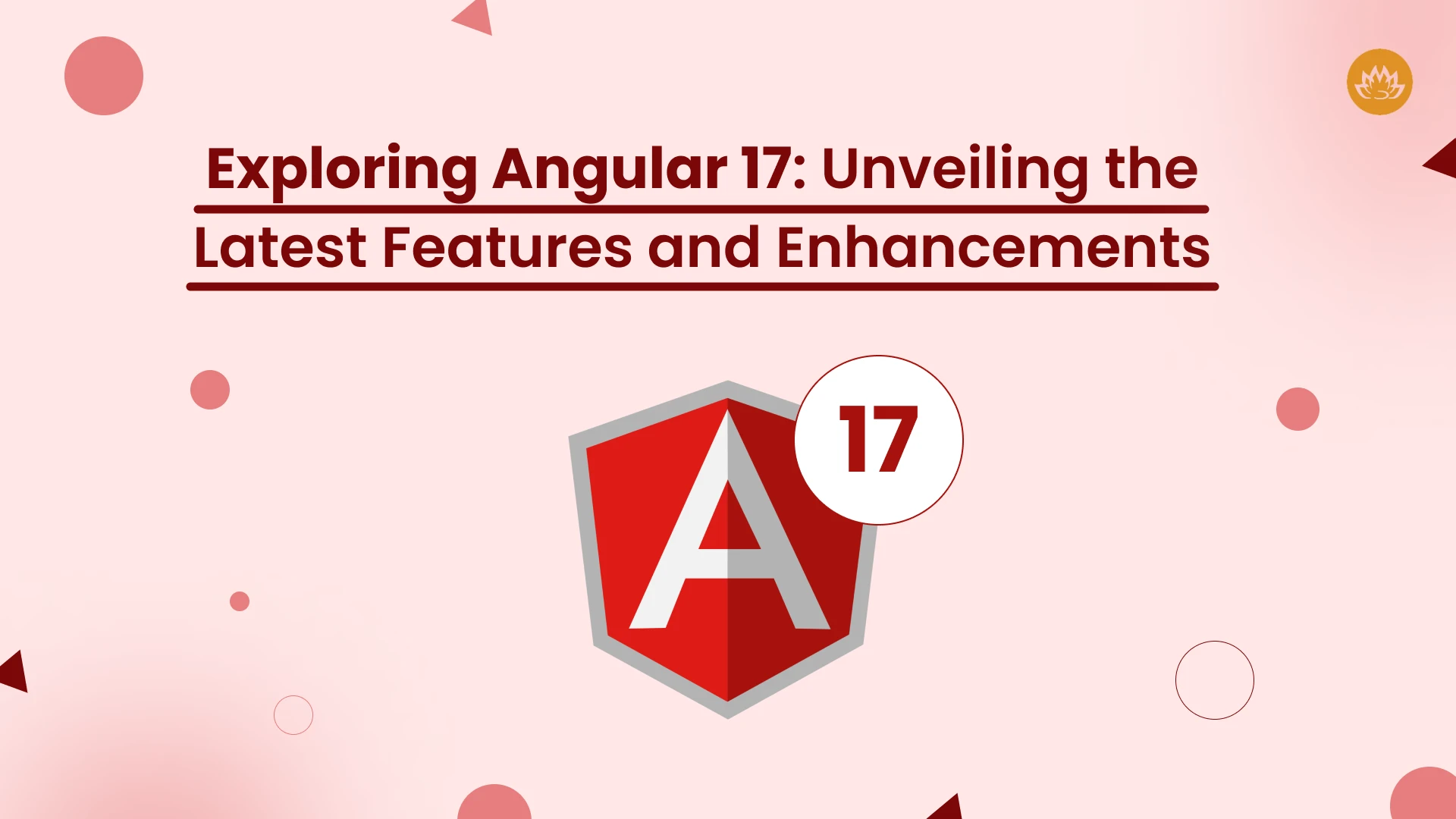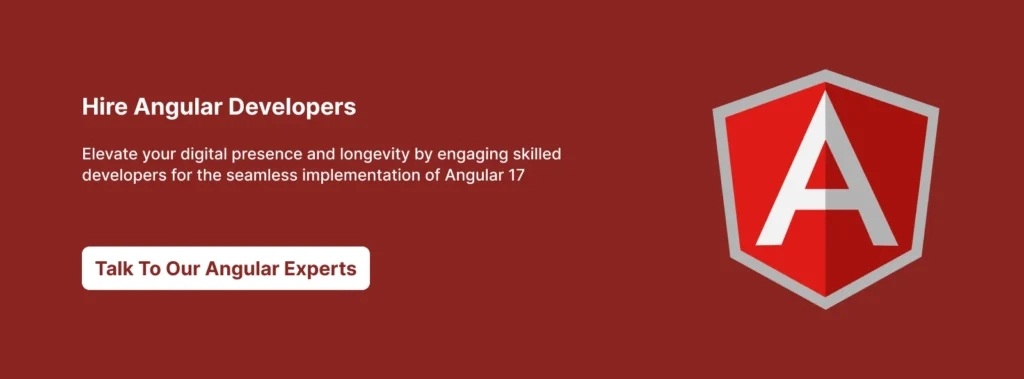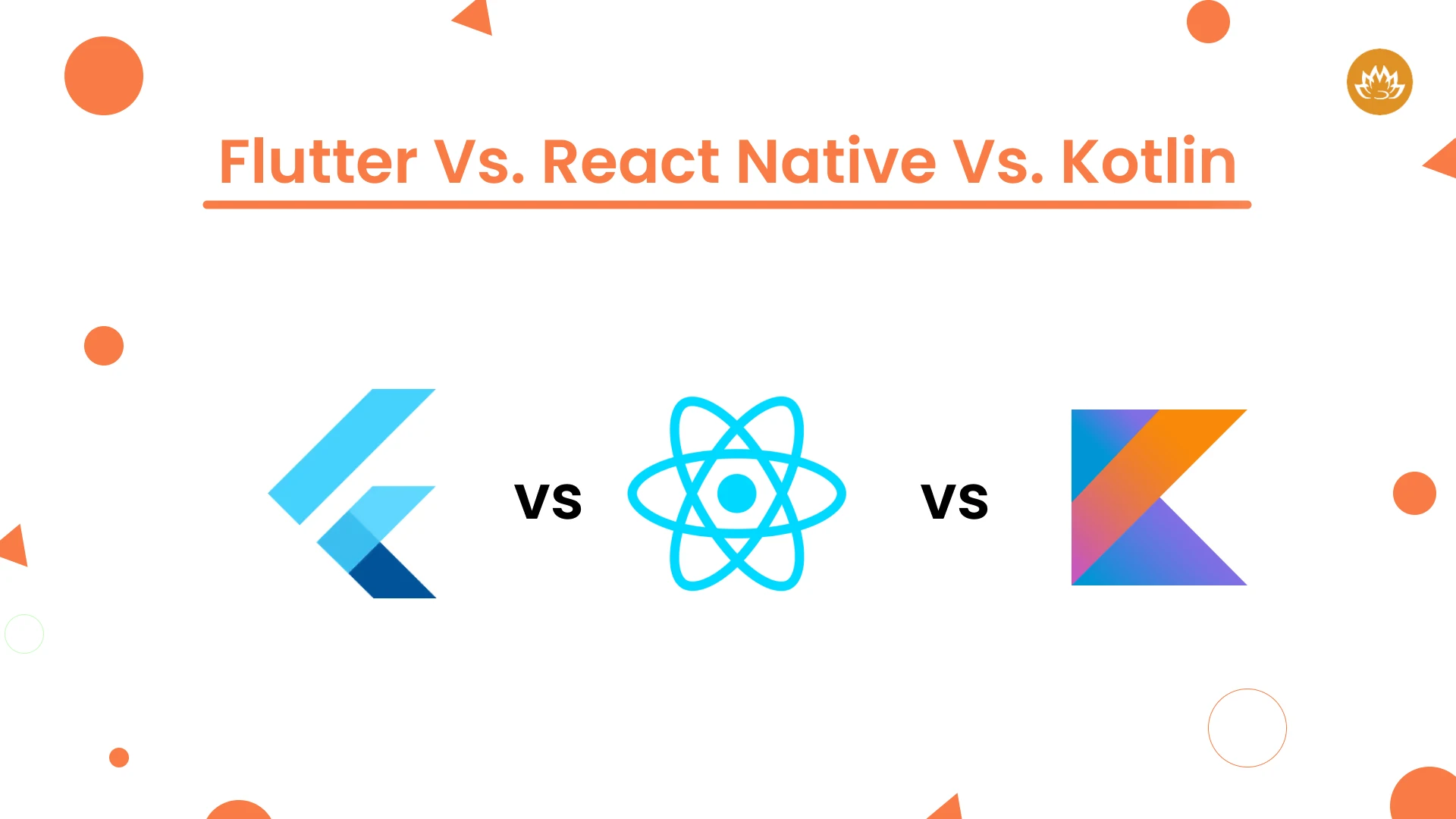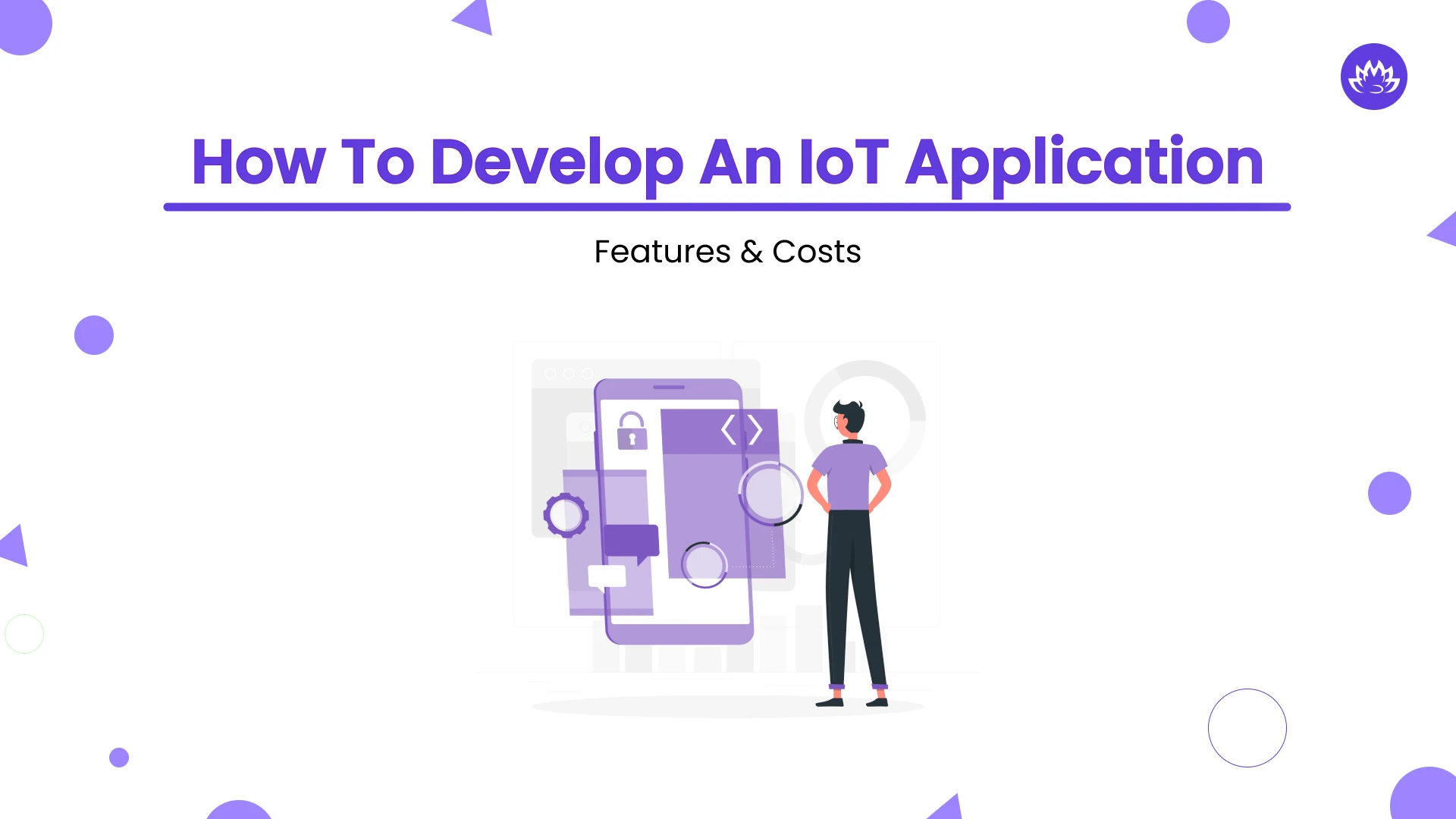Angular crossed a remarkable milestone last year. It celebrated 13 years of an exciting journey, offering comprehensive web development solutions. Since its inception, Angular, the popular frontend framework, has evolved and improved its framework features phenomenally. From rewriting Angular 2 to its latest version 17 that got released on November 2023, it has always remained one of the best options for front-end developers.
The latest unveiling of Angular version 17 has set a great buzz in the community. The framework has introduced so many new features and incremental enhancements. It has brought forward a wide range of benefits and improvements, turning itself into a fresh identity set to create more impact than before.
The Launch of Angular 17 With a New Logo
Angular got its stunning new identity with a fresh logo created with modern design elements. Its vibrant gradients and shades portray its versatility and broader thinking.
The launch of Angular 17 hits with a brand new website angular. dev. It is a robust platform showing deeper commitment to the framework to showcase openness and higher community engagement. Led by Emma Twersky, Angular 17 is a bold step toward releasing an open-sourced website repository exhibiting collaboration and transparency. The website’s new look is in the dark mode.
What’s in it for Angular Developers?
Angular 17 will bring a revolutionary change in the developers’ mindset. It has several new features and enhancements like deferrable views for a turbocharged experience, releasing propels Angular to a better speed, enhancing the run time up to 90%, and better loading time. Besides coding, Angular 17 comes with a brand new look, an engaging journey towards learning, and many improvements. It is more than just an upgrade, bringing a promising future to web development.
What’s New in Angular 17?
-
Performance boost with an increasing speed of up to 87% faster hybrid rendering and 67% improvement in client-side rendering.
-
A brand new sleek website with new features and an interactive learning journey
-
Revised hybrid rendering experience with @angular/ssr package
-
New lifecycle hooks
-
New application builder: Vite and esbuild
-
Debugging capabilities in dependency injection
-
Ng generate commands will have scaffolding standalone components, pipes, and directives
-
Experimental view transitions, supporting to enable transitions
-
Style and styleUrls as strings
Key New Features and Enhancements in Angular 17
New Documentation in New Website
On its new website angular.dev, Angular has provided fresh new documentation that coincides with the updated brand. The new site comes with a user-friendly structure, lots of improvements in guides, and high-quality content. It unveils an interactive learning journey that is done by WebContainers. With this feature, users can now explore and learn Angular and Angular CLI at their speed and according to their convenience. In this way, learners can master Angular in depth.
Built-in Control Flow
A new block template syntax provides a robust feature via simple and declarative APIs. At the back end, the Angular compiler transforms this control flow syntax into efficient JavaScript instructions that can handle control flow, lazy loading, and much more. Any seasoned Angular developer had to face a lot of challenges while using nglf, ngSwitch, and *ngFor. Hence, the Angular team comes with a new built-in control flow that simplifies the entire Angular development process.
The key features provided with this important enhancement are as follows:
Better Type Checking
Type checking improved for more reliable and error-resistant code
Ergonomic Syntax
Comes with more intuitive and developer-friendly syntax that closely aligns with JavaScript and reduces the requirement of frequent documentation lookups.
Build-time Concept
Reduces runtime footprint and substantially minimizes bundle size, thereby aligning with Core Web Vital metrics.
Significant Performance Improvements
Considerable performance improvements that ensure faster runtime and enhanced user experiences.
Automatic Integration
Seamless integration in angular templates with no need for additional imports, aligning the entire development workflow.
Conditional Statements
Here is the functionality of *nglf explained typically in the case of conditional rendering with a new built-in control flow:
<div>
Payment successful! Thank you for your purchase.
</div>
Oops! Payment failed. Please try again.
The built-in @if statement combined will feature the code like below:
@if (paymentSuccessful) {
Payment successful! Thank you for your purchase.
} @else {
Oops! Payment failed. Please try again.
}
As compared to the legacy *nglf option, the capacity to provide content straight away from @else is very important. The present control flow makes it difficult to establish @else which is a functionality that was previously also impossible to execute. Further, knowing about the *switch code will give you a far better idea:
<div [ngSwitch]="paymentStatus">
<successful-payment *ngSwitchCase="'success'"></successful-payment>
<pending-payment *ngSwitchCase="'pending'"></pending-payment>
<failed-payment *ngSwitchCase="'failed'"></failed-payment>
<default-payment-status *ngSwitchDefault></default-payment-status>
</div>
And with the built-in @switch statement, the code looks like below:
@switch (paymentStatus) {
@case ('success') { }
@case ('pending') { }
@case ('failed') { }
@default { }
}
In Angular 17, the built-in control flow notably helps to enhance type-narrowing within the individual branches of @switch, which was practically not attainable with the traditional *ngSwitch.
Built-in for loops
This feature was originally designed for payments and provides a comprehensive developer experience, thrusting the speed of rendering to a different level. The new way to write loops is as follows:
@for (transaction of payments; track transaction.id) {
{{ transaction.amount }}
} @empty {
No payment transactions found
}
The Angular app previously was facing several speed issues due to *ngFor lacking a track function. With the new syntax introduced with @for, track usage has become compulsory to provide speedy performance. So it has become very simple to use an expression rather than using it as a method in your component. Also, @for has various shortcuts to empty collections by using @empty. Behind the scenes, the better algorithm happens only with @for, thereby improving the speed up to 90% faster than *ngFor.
Deferrable views
With Angular 17, there comes a powerful mechanism for using new block syntax that gives access to developers to boost the speed of apps. The deferrable views are mainly used for enhancing performance and developer experiences, enabling seamless and powered deferred loading with unparalleled ease. To implement deferrable views in the new way, you need to follow the below steps clearly,
@defer (on viewport) {
} @placeholder {
<img decoding="async" src="placeholder-image.png" />
}
In the above code, the use of @placeholder is optional and used for customization. For various cases, Angular first shows the content in the limits of the placeholder block, and then enters the viewport, triggering the loading of the component. The moment loading is finished, Angular removes the placeholder and fully displays the rendered component on the web page.
This is done when Angular is in compile time. The framework ensures the identification of components and their complexities, directives, and pipes within a @defer block. It further generates imports and manages the entire loading, and state-switching process with zero effort. The entire deferred loading happens seamlessly for developers.
However, there are various blocks for loading and error states, thereby aligning the management of various situations. Angular is one such framework that handles several complexities at the backend and helps you to conduct the entire process easily and seamlessly.
@defer (on viewport) {
} @loading {
Loading…
} @error {
Loading failed :(
} @placeholder {
<img decoding="async" src="placeholder.png">
}
Deferrable views have additional triggers to conduct dynamic lazy loading:
-
On idle: When the browser is not engaged, you can load the block lazily in heavy tasks.
-
On immediate: Without blocking the browser, you can initiate automatic deferred loading.
-
On timer: Delay loading with a specified timer
-
On viewport and viewport (): Apart from triggering during the viewpoint, you can mention a reference for an anchor element, making Angular perform lazy loading and render the component when the anchor element becomes visible.
-
On interaction and interaction(): It starts deferred losing during user interaction with a specific element.
-
On hover and hover (): It triggers deferred loading when the user hovers over an element
-
When : Establish and identify the exact condition via boolean expression
In addition, deferrable views provide the ability to prefetch the dependencies ahead of rendering them. By including the prefetching, it becomes simpler to add a prefetch statement to the defer block, and the entire action supports all the similar triggers:
@defer (on viewport; prefetch on idle) {
}
Built-in Control Flow Automatic Migration
This feature is designed to make the entire upgrade process seamless and easy. It is incorporated in all new Angular 17 projects. It is found as a top feature in developer previews with various capabilities that can explored and feedback can be given to the Angular team. If you want to try in existing applications, you can follow the simple migration steps:
-
Make sure you have the Angular CLI version 17
-
The below command can assist you with the migration of existing projects. However, it won't handle all the aspects automatically:
ng generate @angular/core:control-flow
The below breakdown explains what it does and what issues still need to be addressed:
What goes well:
-
It updates the templates by converting common directives *nglf, ngFor, ngSwitch to the built-in syntax if, for, switch.
-
It does basic code adjustments that may make minor modifications to related TypeScript code like updating import statements or variable names.
What it cannot do:
-
It cannot perform version checks, ensuring it is currently on Angular version 17 or later. If not you may do it by using the ng update command:
ng update @angular/core @angular/cli
-
Post angular version upgrade, you must manually review and test your migrated code, ensuring all work as per the expectations before proceeding to run the ng generate a command for control-flow
-
In complex scenarios, you may also need to handle some edge cases or custom flow logic accurately, creating the need to conduct a manual intervention.
-
Also, there may arise the requirement of creating additional configurations to adjust project settings or dependencies for full compatibility in the angular app.
TypeScript 5.2 Support
TyeScript 5.2 is a compulsory requirement for Angular 17. The previous versions of TypeScript are not accessible now. The framework is deeply committed to keeping pace with the latest TypeScript releases, ensuring access to the latest language features. Angular 17 also supports TypeScript 5.2 which is generally recommended for using the latest stable TypeScript version. There are several benefits of the version 5.2:
-
Provides 33% speedier type checking for recursive types. It speeds up the development workflow for web application
-
You can harness the new control flow declarations for cleaner code and ergonomic error handling.
-
Automatic missing-comma insertions
-
Readonly arrays
-
Await expressions in enum members
-
Satisfies operator available for type guards.
Related Post :
New Hybrid Rendering Experience
Angular 17 has also come up with a new rendering experience, filling up the server-side rendering and static-site generation gaps for developers. Now developers will experience a convenient prompt to enable SSR and SSG during ongoing new Angular projects.
In option, developers can also enable SSR in new Angular 17 projects by using the command:
ng new my-app --ssr
Hydration and Server Side Rendering
Hydration is a developer preview and was used in previous versions as a new feature. Now efficient developers have chosen to embrace hydration in thousands of applications. Here at this point, Angular has created a phenomenal milestone by announcing the official exit of hydration front the developer preview phase, and by automatically enabling default setup in all new apps by using server-side rendering.
New @angularssr package
provides more weightage on the increased integration of server-side rendering into broader tooling offerings. Today, if you want to add hybrid rendering support to your existing application, this is possible by the following command:
Ng add @angular/ssr
By running this command, the server entry point is generated, incorporating server-side rendering and static-site generation build capabilities. It also enables hydration by default. @angular/ssr also now offers similar functionality to @nguniversal/express-engine.
New Lifecycle Hooks
To improve the performance of Angular’s SSR and SSG, it is needed to move away from DOM emulation and direct DM manipulations. To identify the importance of element interactions in most of the applications’ lifecycle like initializing third-party libraries or measuring element size, Angular 17 has introduced new lifecycle hooks:
-
AfterRender - registering a callback to be invoked each time the application finishes rendering
-
AfterRender - registering a callback to be invoked each time the application finishes rendering
Browsers trigger these hooks by securely incorporating custom DOM logic into the angular components. It gives a controlled environment for typical DOM manipulations.
Vite and ESBuild the default
Most of the things in Angular 17 were not done overnight. Several significant changes were made in the Angular CLI build pipeline to enable SSR. In the previous version 16, the developer preview of the ESBuild and Vite-powered build experience was introduced. After doing several experiments, developers reported remarkable results. Up to 67% of improvement was found in build times. In angular 17, there is a new application builder that has officially graduated from developer preview to default for all new applications.
DevTools has Dependency injection debugging
The debugging features of Angular DevTools that have been revamped with new capabilities are:
-
To see what components are dependent on
-
Get an understanding of tree injectors and how dependencies are resolved
-
Exploring providers that declared within injectors
Standalone APIs
Standalone components are a new feature, simplifying component architecture and providing substantial performance benefits. With the ng generate command, a standalone new component, pipe, and directive are created.
The below command is a schematic assisting in the migration of the entire application for using standalone components;
ng generate @angular/core:standalone
Experimental view transitions Support
The experimental View Transitions API of Angular 17 helps to perform seamless DOM transitions. The router directly supports through the withViewTransitions feature. You can configure it during bootstrap for seamless animated route transitions and harness the browser’s abilities. The withViewTransitions function offers alternative configurations for more control like customising animations and skipping animations with class adjustments on the document:
bootstrapApplication(App, {
providers: [
provideRouter(routes, withViewTransitions()),
]
});
Animations module defer loading
The bundle can be compressed by using this feature. It is now possible to lazily load the animation module by using the below code:
import { provideAnimationsAsync } from '@angular/platform-browser/animations-async';
bootstrapApplication(RootCmp, {
providers: [provideAnimationsAsync()]
});
Input value transforms
While working with components that get boolean inputs, there is a common challenge arising while passing values using a certain syntax. For instance, the ToggleComponent has the following definition:
@Component({
selector: 'app-toggle',
template: `...`,
})
export class ToggleComponent {
@Input() isEnabled: boolean = false;
}
If you want to use it as , you may face an encounter error by stating “string is not assignable to boolean”. To go through this situation, you can use an input value that transforms by configuring the input decorator:
@Component({
selector: 'app-toggle',
template: `...`,
})
export class ToggleComponent {
@Input({ transform: booleanAttribute }) isEnabled: boolean = false;
}
In this, booleanAttribute is a function that is imported from the @angular/core library. It is created to transform string-based input values into boolean values before passing to component properties in angular application.
Strings now are Style and styleUrls
All the Angular components provide the flexibility of supporting multiple stylesheets per component. In several cases during styling components, there is a common approach to create an array with a single element, pointing to inline styles or referencing an external stylesheet. In the new Angular 17, you can switch between using styleUrls, styles, and styleUrl depending on the preferences that define the inline styles, specifying an array of stylesheet URLs, or providing a single URL for the stylesheet.
Migration Tips for Angular 17 Latest Version
-
Check the official migration guide
-
Upgrade all your development environment
-
Run the ng update command
-
Test your application thoroughly
-
Take active support from the community
Final Thoughts
Angular version 17 has ushered in a new era of web development, providing groundbreaking features, performance enhancements, and several advanced tools. This robust framework unveils the treasure of various possibilities and can create web applications that will work efficiently, and rapidly, and can deliver exceptional user experiences. So get ready to empower your web development journey with great tools and enhancements to make your job smoother and more effective. Let us together embrace these changes and work for a better future in the web development space. Hire Angular JS developers today for your next project! For more details, contact us and we can help you harness the benefits of the latest Angular 17 version.
Author
-

Sunil is a result-orientated Chief Technology Officer with over a decade of deep technical experience delivering solutions to startups, entrepreneurs, and enterprises across the globe. Have led large-scale projects in mobile and web applications using technologies such as React Native, Flutter, Laravel, MEAN and MERN stack development.
View all posts













